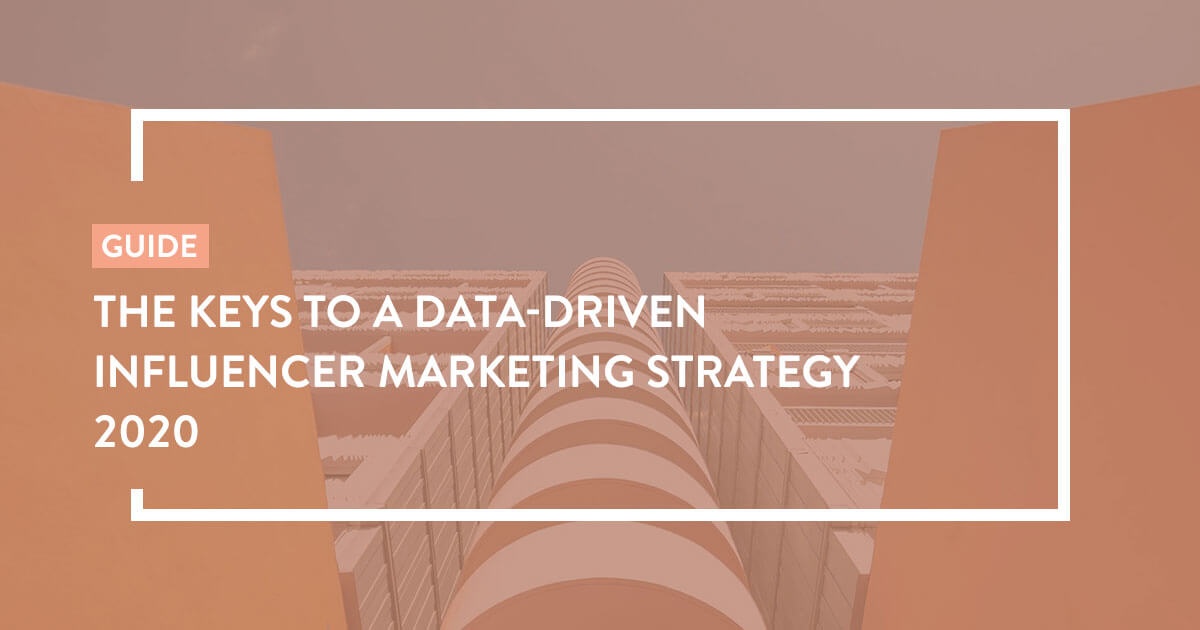An ever-increasing number of companies are shifting greater and more significant budgets to influencer marketing. In 2019, the industry is expected to reach sales of $7-10 billion USD, in comparison to $5 billion in 2018. For the purpose of this article, we’re going to assume you know the answer to “what is data-driven influencer marketing?”
Reasons for data-driven influencer marketing
In pace with the rapid development of the influencer marketing industry, a data-driven approach to the channel is increasingly important – otherwise you risk throwing money away. In this mini blog post series, we give you four reasons why data is the be-all and end-all in a successful influencer marketing strategy – starting off with two of them!
1. Identify influencers with relevant target audience data
To succeed with your influencer activation, you need to ensure that the influencers you choose to partner with actually reach your target audience. A common mistake here is to go by instinct and choose profiles that you personally like, or that you hear many people at work talking about. It is also common to conclude that a profile’s followers always reflect the profile itself, which may not necessarily be the case at all. For example, if your target group is women 25-35 years old in southern Germany, you may make a huge mistake if you choose to collaborate with 30-year-old Alina in Munich just based on your gut feelings, as her follower base could be 80% followers in Brazil (who in the worst case, may not even be real!), and thus you’d get completely ineffective results.
Data is a critical component to succeed with your influencer activation. Firstly, by using detailed target group data you can get help with finding profiles that you know will definitely reach your target group. On the one hand, you have the opportunity to identify accounts with high (and genuine!) commitment to and influence on the target group. With the help of data, you can also avoid accounts with fake followers – something that is becoming increasingly important as this phenomenon increases.
2. Optimise the outcome using ”lookalike audiences”
Influencer marketing collaborations can, in many ways, be similar to other types of advertising, such as Google Ads or Facebook. In the same way you keep an eye on your paid ads to see which ones are performing well and which need to be changed or replaced, you should constantly review your influencer activations to achieve the best possible results. For example, if the goal is to increase sales on your website, you should continuously review which influencers actually manage to drive traffic that leads to sales – and which ones do not. By keeping track of this, you have the opportunity to adjust your strategy and content accordingly.
In order to best optimise your activation, you should have access to a tool that can help you develop so-called ”lookalike audiences”: using the aid of AI and data, you can identify influencers that are similar to the profiles that have historically performed well – and should therefore be safe bets for future activations. In short, the more data you have at hand, the better opportunities you have for optimising the results.
3. Get insight into how many people actually see your posts (true reach!)
It is easy to think that the more followers an influencer has, the more people will see the profile posts. The truth is that the estimated or potential reach may not necessarily be even close to the true reach. Here’s an example: an influencer with 100,000 followers can have 10% true reach on their posts, which means 10,000 actual views. Another influencer with half as many followers may have a higher proportion of true reach, let’s say 80%, which means as many as 40,000 actual views. Using this data, which you can access with the right tools, you can more easily identify the influencers that reach the most people in the selected target group, regardless of the number of followers.
Data is a critical component to succeed with your influencer activation. Firstly, by using detailed target group data you can get help with finding profiles that you know will definitely reach your target group. On the one hand, you have the opportunity to identify accounts with high (and genuine!) commitment to and influence on the target group. With the help of data, you can also avoid accounts with fake followers – something that is becoming increasingly important as this phenomenon increases.
4. Evaluate your influencer activation correctly and get an overall picture of your investment
In order to succeed with influencer marketing, measurement and follow-up are the be-all and end-all – and this is where data comes into the picture. First and foremost, you should make sure that all the measurements are set up correctly from the start and that you have control over which KPIs are relevant to measure. Without this in place, it’s like wandering in the wilderness without either a map, compass, or final destination.
To get an accurate picture of your investment, you must take a step back and try to get an overall picture of the results. How has it affected other channels and how does your influencer marketing complement your other marketing activities? Perhaps organic traffic has increased, or the effect of your search advertising has improved – two common consequences of a thoughtful influencer marketing effort. In addition to analysing online data, you can also use brand surveys to measure how factors such as brand awareness, perception, and purchase intention have been affected as a result of your influencer marketing.
In summary, in order to be able to evaluate your influencer marketing efforts in the best possible way, it is essential that you use all the data you have on hand instead of staring blindly at individual KPIs – only then can you get a holistic picture of your investment.
If you want to dig deeper into the subject, feel free to download to our guide about the keys to a data-driven influencer marketing strategy.



